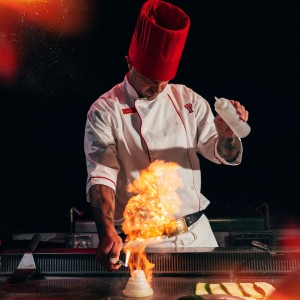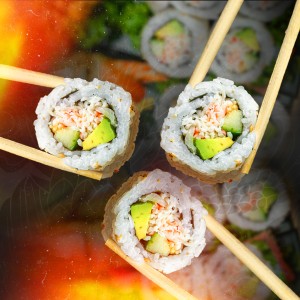QUICK ANSWER: WHAT IS TEPPANYAKI
Teppanyaki means “cooked on a steel grill.” It is a Japanese style of cooking on a flat iron plate. Chefs prepare fresh ingredients with a show right in front of you.
The History of Teppanyaki
What does teppanyaki mean? Quite literally, “broiled on a steel grill” – the definition of Japanese teppanyaki-style cooking in its most simple form. However, exactly when this cooking style first came into use is more complicated.
Some believe teppanyaki originated in post-World War II Japan, when Japanese chefs wanted to appeal to Western tastes. Others trace its roots to traditional Japanese cooking methods dating back centuries.










